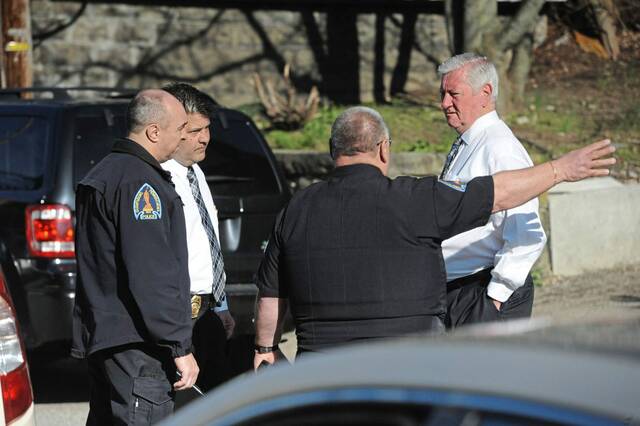Joseph Sabino Mistick: The human toll of homicide
Jim Morton knows a lot about homicide — maybe too much. Morton retired three years ago after 46 years with the Allegheny County Police Department. For 28 of those years, he worked homicides, rising to head the division and finally serving as assistant superintendent of detectives. Even as a supervisor he still went to homicide scenes.
Homicide fascinates and entertains us as long as it does not touch us personally. It is the stuff of television series, movies, novels, true crime shows and podcasts. But when it affects family or friends or the neighborhood, it changes lives forever.
And a recently released report by the Allegheny County Department of Human Services indicates that homicides are on the rise in our region. Homicides increased both in Allegheny County and the City of Pittsburgh, which has its own homicide unit, “by 27% in the county and by 43% in the city from 2019 to 2021, largely reversing the declines of previous years.”
“The costs of violence extend far beyond offenders, victims and their loved ones. Violence impacts the entire community,” the report found. Neighborhoods decline, businesses close, people move, students falter, economic investment goes elsewhere, law enforcement and the courts are nearly overwhelmed. And constant trauma eats away at the physical and mental health of almost all residents, workers and visitors.
When 18-month-old De’Avry Thomas was killed in a drive-by shooting in Downtown Pittsburgh on a sunny Sunday afternoon in May, it broke the hearts of all who heard about it. It was also an act of mindless terrorism, instilling fear, keeping people in their apartments and condos, causing more than a few to second-guess their move into the city.
We ask the police to do a lot for us, but investigating homicides is the worst of society’s many problems that we ask them to handle. They go home to their families every night and act like they have left their work at the office, but that’s never possible.
The human toll on homicide detectives does not change, even as the technical nature of investigations changes.
“Technology gives us a certain edge these days,” Morton says. “When I started, no one could imagine things like DNA, closed circuit TV, doorbell cameras, license plate readers, GPS, cellphone pings and drones.”
Other changes cut the other way.
“So many of the shooters and victims are 14 and 15 years old. And they’re fighting over drugs or guns or some sort of retaliation,” Morton says. “It could be as simple as an insult on social media.”
“The firepower of these military-style weapons means that the survival rate is a lot lower than it was with the simple handguns of the ’90s. The first time I saw one of these military weapons used in civilian life, the victim was hit once from half a block away and it took his leg off.”
Morton is proof that even after you leave homicide, homicide never leaves you. News reports of killings still get his attention. He still brainstorms with detectives. And he knows that the single biggest problem facing homicide detectives now is that people are afraid to help.
“That makes it way tougher than it should be,” he says. “There is always someone out there who knows something. We need them to step up.”
Jim Morton knows a lot about homicide.
Joseph Sabino Mistick can be reached at misticklaw@gmail.com.
Remove the ads from your TribLIVE reading experience but still support the journalists who create the content with TribLIVE Ad-Free.

